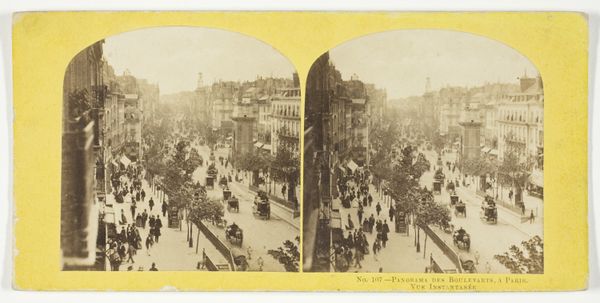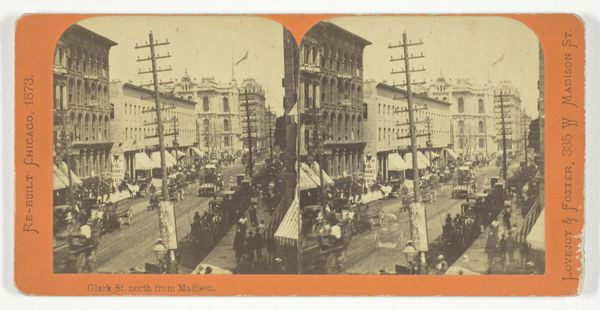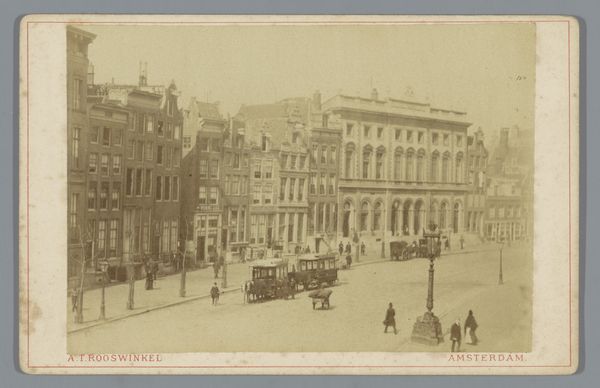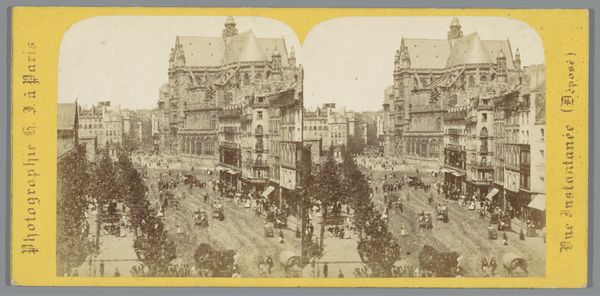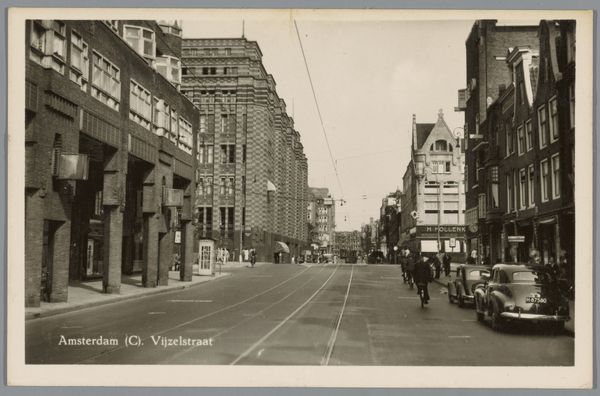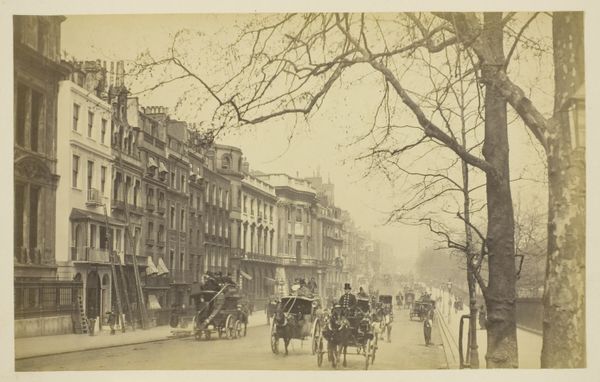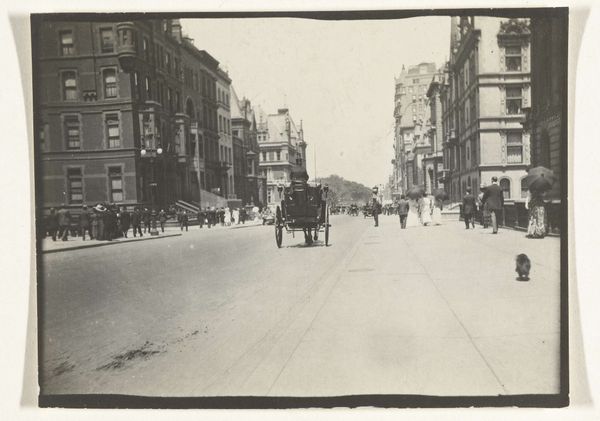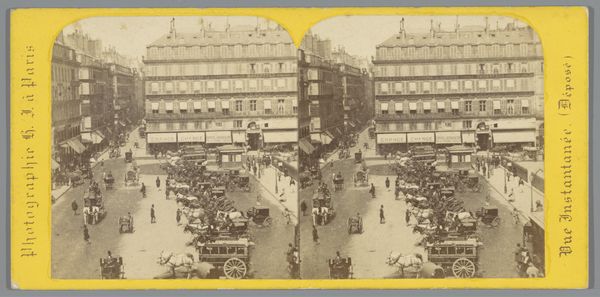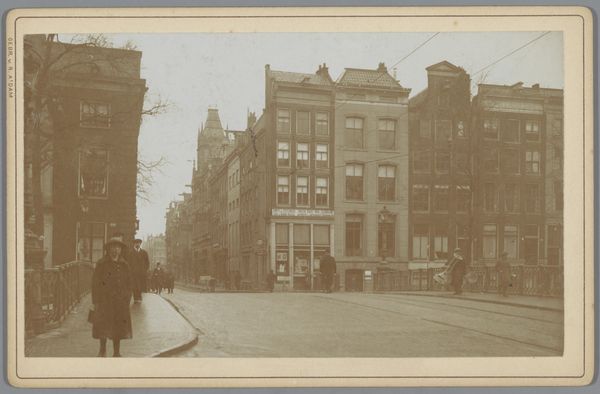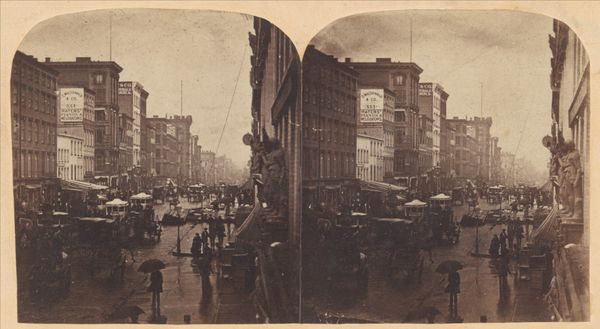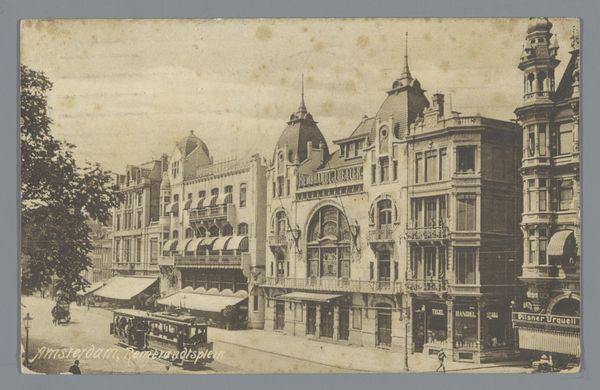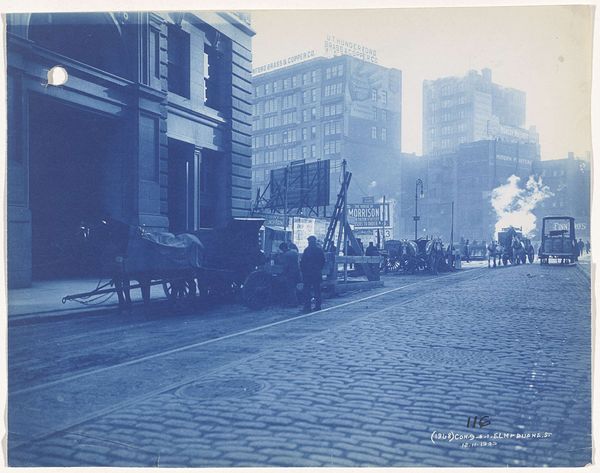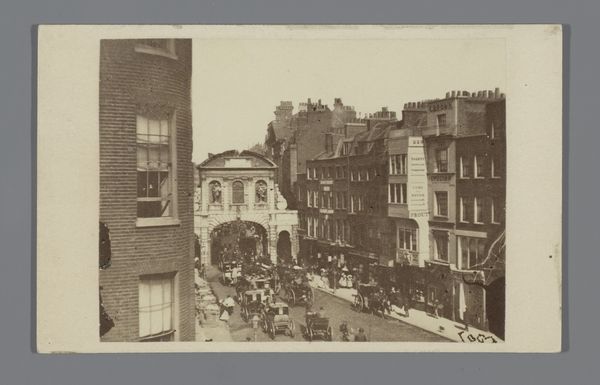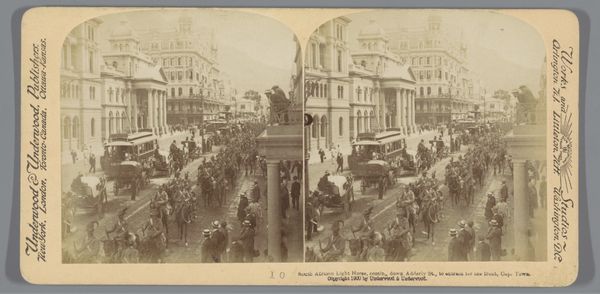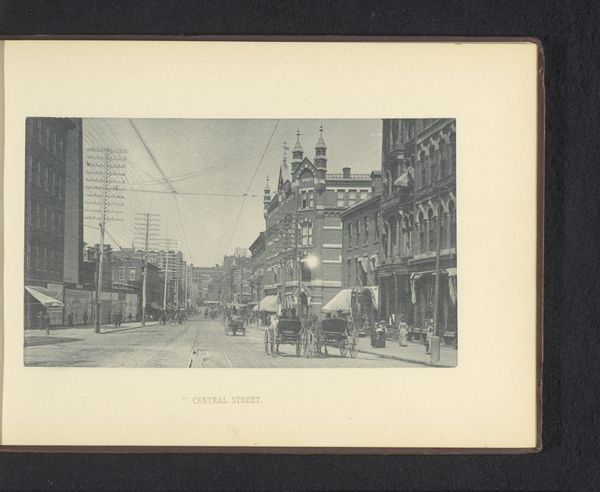
photography
#
pictorialism
#
photography
#
cityscape
#
street
Dimensions: height 85 mm, width 170 mm
Copyright: Rijks Museum: Open Domain
Editor: Here we have "Gezicht op een straat te Glasgow," a photograph taken in 1913. It's incredibly detailed, showing a bustling city street. What I find fascinating is the density of people and vehicles; it really gives a sense of the rapid urbanization happening at the time. What stands out to you in this photograph? Curator: What I notice is less about the singular image, and more about its role within visual culture. This photograph, likely part of a series or a postcard, provided a window into a specific social reality, Glasgow in 1913. The presence of streetcars is significant – they weren't merely modes of transport, but symbols of modernity and social change accessible to more than just the upper classes. This sort of imagery also contributed to shaping public perception of urban life and national identity. Who was its audience, and what purpose did these kinds of images serve beyond simple documentation? Editor: So you're saying that its creation and circulation reflect specific socio-political conditions, beyond just depicting a scene? Curator: Precisely. The photo embodies more than the individuals that we observe populating the street; they represent broader segments of the British populace as they transition through stages of social transformation during the rise of industrial urbanization. Who held the rights to distribute it, who bought these images, and what social function did photography fill at this moment? Were they largely intended for a local audience or was there interest in depicting urban spaces transnationally? Editor: That's really insightful. I hadn't considered the power dynamics involved in producing and distributing these images. It really emphasizes the importance of examining art beyond its surface-level aesthetic qualities. Curator: Exactly. Recognizing its historical situation reminds us to see photographs not just as neutral records, but as social and political statements. Editor: I'll definitely think differently about similar images from now on.
Comments
No comments
Be the first to comment and join the conversation on the ultimate creative platform.
